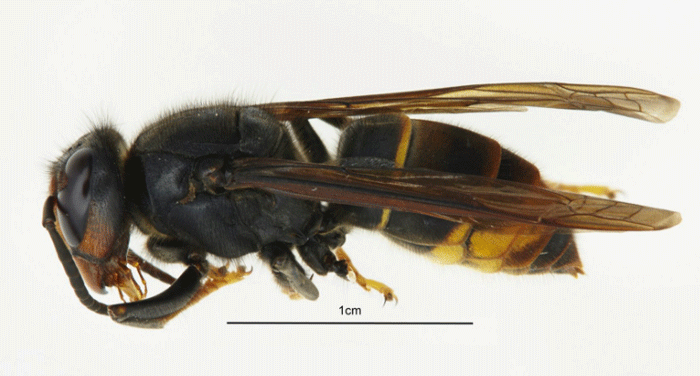Buglife concern as first Asian hornets confirmed in England
Defra have confirmed the first Asian hornets (Vespa velutina) in the UK, two have been found in Tetbury, Gloucestershire. This suggests there may be a nest, but it has not been located and it is unclear how the hornets arrived.

From a public health perspective this invasive hornet poses no more risk to humans than the Common wasp. However, it poses a serious threat to bees and food pollination. This is because wild bees, but particularly honeybees, are the Asian hornet’s food of choice.
Matt Shardlow, Chief Executive of Buglife commented. ”It’s arrival is of huge concern, our pollinators are currently in decline from pesticide use, loss of habitat and climatic change, this voracious predator now could push some species beyond the tipping point and into extinction. It seems likely to have arrived as a stowaway, the same way they reached continental Europe. Again the UK’s lax biosecurity rules are highlighted; routes for invasive species must be tightened so that these problems species are kept at bay.”
The Asian hornet is already found in France, where it arrived in Chinese imports, and it has spread to Spain and Italy. In Tetbury one Asian hornet was captured at a bee hive and another was observed. The DNA of the captured hornet will be analysed to try to reveal its origin. Buglife hopes that this is an isolated incident, and the nest (if there is one) is quickly found and destroyed.
It is smaller than the European hornet (Vespa crabro) which is native to the UK. Workers are 2 cm long and a big queen 3 cm. They are more smoky black than the native hornets and look like they are wearing yellow socks. Anyone thinking they may have found an Asian hornet should report this to Defra, preferably with a photo, via - alertnonnative@ceh.ac.uk
Buglife
21 September 2016






